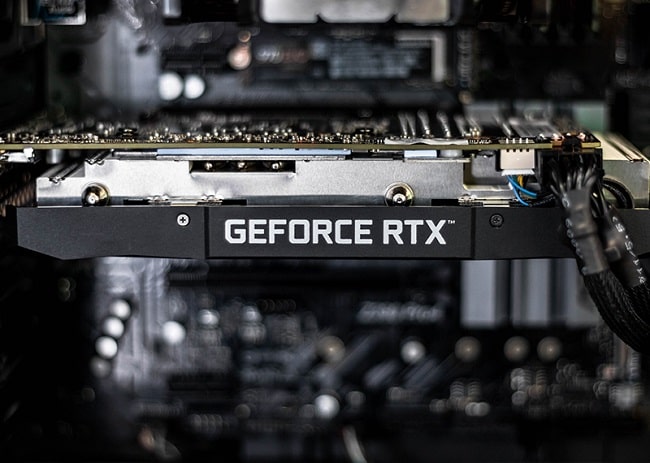What is a Programming Language?
A programming language is a set of written symbols that instructs the computer hardware to perform specific tasks. Typically, a programming language consists of a vocabulary and a set of rules (called syntax) that the programmer must learn.

In order to make computers work for us, some sort of instructions must be stored in a some kind of language, And that language is called a Programming Language. A programming language consists of all the symbols, characters, and usage rules that permit people to communicate with computers. There are at least several hundred, and possibly several thousand different programming languages. Some of these are created to serve a special purpose (controlling a robot), while others are more flexible general-purpose tools that are suitable for many types of applications.
Programming Language Generations
Programming languages are often categorized into generations based on the evolution of their features, design philosophies, and underlying technologies. The concept of language generations is a way to understand the historical progression of programming languages. The generations are generally classified as follows:
The first generation language, or 1GL:
Machine language is the only programming language that the computer can understand directly without translation. It is a language made up of entirely 1s and 0s. There is not, however, one universal machine language because the language must be written in accordance with the special characteristics of a given processor. Each type or family of processor requires its own machine language. For this reason, machine language is said to be machine-dependent (also called hardware-dependent).
In the computer’s first generation, programmers had to use machine language because no other option was available. Machine language programs have the advantage of very fast execution speeds and efficient use of primary memory. Use of machine language is very tedious, difficult and time consuming method of programming. Machine language is low-level language. Since the programmer must specify every detail of an operation, a low-level language requires that the programmer have detailed knowledge of how the computer works. Programmers had to know a great deal about the computer’s design and how it functioned. As a result, programmers were few in numbers and lacked complexity. To make programming simpler, other easier-to-use programming languages have been developed. These languages, however must ultimately be translated into machine language before the computer can understand and use them.
The second-generation languages, or 2GL:
The first step in making software development easier and more efficient was the creation of Assembly languages. They are also classified as low-level languages because detailed knowledge of hardware is still required. They were developed in 1950s. Assembly languages use mnemonic operation codes and symbolic addresses in place of 1s and 0s to represent the operation codes. A mnemonic is an alphabetical abbreviation used as memory aid. This means a programmer can use abbreviation instead of having to remember lengthy binary instruction codes. For example, it is much easier to remember L for Load, A for Add, B for Branch, and C for Compare than the binary equivalents i-e different combinations of 0s and 1s.
The third-generation languages, or 3GL:
Third generation languages, also known as high-level languages, are very much like everyday text and mathematical formulas in appearance. They are designed to run on a number of different computers with few or no changes. The third-generation languages are high-level languages, such as C, C++, Java, JavaScript, and Visual Basic
The fourth-generation languages, or 4GL:
Fourth generation languages are also known as very high level languages. They are non-procedural languages, so named because they allow programmers and users to specify what the computer is supposed to do without having to specify how the computer is supposed to do it. Consequently, fourth generation languages need approximately one tenth the number of statements that a high level languages needs to achieve the same results. Because they are so much easier to use than third generation languages, fourth generation languages allow users, or non-computer professionals, to develop software. Fourth generation languages are commonly used in database programming and scripts examples include Perl, PHP, Python, Ruby, and SQL.
The fifth-generation languages, or 5GL:
Natural Languages represent the next step in the development of programming languages, i-e fifth generation languages. The text of a natural language statement very closely resembles human speech. In fact, one could word a statement in several ways perhaps even misspelling some words or changing the order of the words and get the same result. These languages are also designed to make the computer “smarter”. Examples of fifth generation languages include Mercury, OPS5, and Prolog.
The sixth-generation languages, or 6GL:
In computer programming, a sixth-generation programming language (6GPL) is a very high-level programming language with extreme abstraction from the hardware. Sixth-generation languages are high-level languages like fourth and fifth-generation languages. A sixth-generation is any programming language based on No code & Visual development.
Category: Programming
on: 03 Oct 2018
on: 15 Oct 2023
Featured posts
You may like these posts.
GPU - World First GPU Details & Where Company's use GPUs:
GPU (Graphics Processing Unit) is an electronic circuit used to speed up the creation of both 2D and 3D images. A GPU can be present on a video card.

File Compression - Lossless & Lossy Compression:
The process of reducing data by applying a compression technique is called compression, and the resulting data is called compressed data.

Domain Name Server - Generic, Country & Inverse Domains:
The purpose of DNS (Domain Name Server) is to translate domain names into IP addresses. A service is used for translating domain names into IP addresses.
What's Next?
We've now entered the finance section on this platform, where you can enhance your financial literacy.